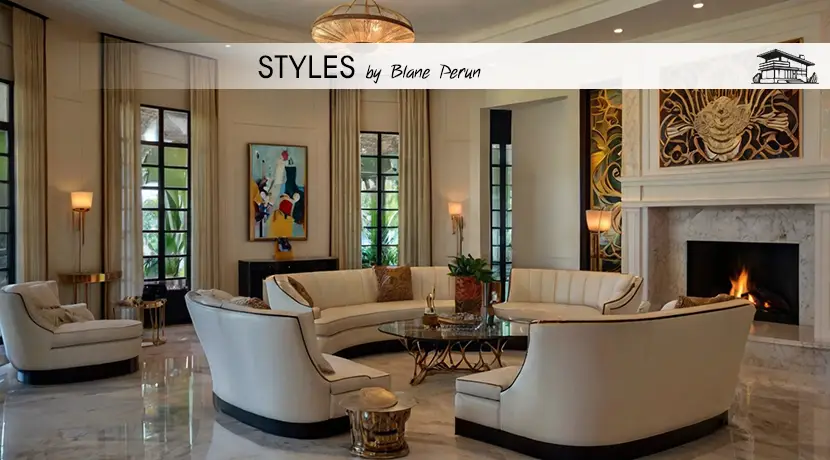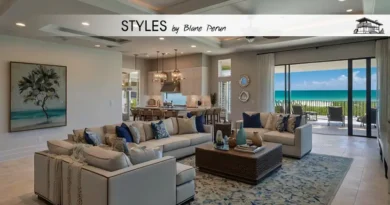Interior Design Styles
Unveiling the Charm of Interior Design Styles
Exploring the world of interior design is akin to embarking on a thrilling voyage through a kaleidoscope of textures, colors, and aesthetics. It’s a realm where creativity meets functionality, resulting in spaces that not only captivate the eye but also cater to the soul. The essence of interior design lies in its diversity, with each style offering a unique narrative and ambiance. As we delve into the enchanting world of interior design styles, we unlock the secrets to transforming mundane spaces into extraordinary habitats, where every corner tells a story, and every element harmonizes to create a symphony of visual delight.

The Timeless Elegance of Classic Design
The Intricacies of Traditional Furnishings
Diving into the classic design, we encounter a world where opulence meets order. Traditional furnishings stand as the cornerstone of this venerable style, with pieces often boasting intricate woodwork, sumptuous fabrics, and an aura of aristocracy. The employment of mahogany, oak, and cherry wood, coupled with artisanal craftsmanship, imbues furniture with a timeless appeal. Upholstery in rich textures and regal patterns further accentuates the sophistication, making each piece not just a functional item but a testament to historical elegance.
The Symphony of Classic Color Palettes
The classic design palette is a harmonious blend of understated hues and rich accents. Colors like deep navy, burgundy, and forest green serve as perfect backdrops for the intricate details typical of classic interiors. These shades complement the natural wood tones and highlight the gold and brass hardware, creating an atmosphere of warmth and luxury. This careful selection of colors not only enhances the aesthetic value but also contributes to the overall ambiance, evoking a sense of tranquility and timeless elegance.
The Bold World of Contemporary Design
Innovations in Modern Materials
Contemporary design stands as a testament to innovation, where modern materials redefine the boundaries of creativity. Materials like polished concrete, tempered glass, and industrial steel not only offer new textures and finishes but also reflect the ethos of modern living—simplicity, functionality, and sustainability. The incorporation of these materials into interior design not only paves the way for unique architectural elements but also fosters an environment that resonates with the rhythm of urban life.
The Dynamics of Contemporary Color Schemes
The color schemes in contemporary design are a canvas for personal expression, featuring a base of neutral tones accented by bold and vibrant hues. This approach allows for a dynamic interplay between background and accent colors, enabling designers to create spaces that are both versatile and visually striking. The use of color blocking and geometric patterns adds a layer of depth and complexity, transforming ordinary spaces into modern masterpieces.
The Rustic Charm of Country Style
Embracing Natural Elements in Country Decor
Country style interior design is a homage to the rustic beauty of the natural world, emphasizing organic textures, earthy tones, and handcrafted elements. Materials like reclaimed wood, natural stone, and wrought iron not only add authenticity to the country aesthetic but also foster a connection with nature. This design style celebrates imperfections and the passage of time, making each piece tell a story of heritage and resilience.
The Warmth of Country Color Palettes
The color palette in country-style design is a reflection of the natural landscape, with soft, muted tones drawing inspiration from the earth, sky, and foliage. Colors like sage green, dusty rose, and buttery yellow create a soothing backdrop that complements the natural materials and enhances the cozy atmosphere. This thoughtful use of color not only adds visual warmth but also fosters a sense of comfort and belonging, making spaces feel like a sanctuary away from the hustle and bustle of modern life.
In the diverse realm of interior design styles, each style serves as a mirror reflecting the myriad facets of human creativity and expression. From the grandeur of classic design to the innovative spirit of contemporary aesthetics, and the homey allure of country style, these styles offer a rich tapestry of choices for those looking to infuse their spaces with personality and charm.

FAQs:
What distinguishes modern from contemporary interior design styles? Modern and contemporary interior design styles, while often used interchangeably, have distinct characteristics. Modern design refers to a specific period (mid-20th century) and features minimalism, clean lines, and a specific palette of colors and materials. Contemporary design, on the other hand, evolves with current trends, incorporating innovative materials and diverse colors to create dynamic, versatile spaces.
How can I blend different interior design styles without creating clutter? Blending different interior design styles requires a thoughtful approach to balance and harmony. Start with a neutral base and choose a dominant style to lead the design. Incorporate elements from other styles as accents, ensuring they complement rather than compete with the primary style. Maintaining a consistent color scheme and repeating key materials or shapes can unify the space.
Are sustainable materials becoming more prevalent in interior design styles? Yes, sustainability is becoming a significant trend in interior design, with an increasing number of designers and homeowners prioritizing eco-friendly materials and practices. Sustainable design includes the use of recycled, reclaimed, and renewable resources, energy-efficient lighting, and non-toxic paints and finishes. This approach not only minimizes environmental impact but also contributes to healthier, more sustainable living spaces.
What role do textiles play in defining interior design styles? Textiles are pivotal in defining and enhancing interior design styles, adding texture, color, and pattern to a space. In classic designs, luxurious fabrics like silk and velvet add opulence, while in modern interiors, natural fibers such as linen and wool promote simplicity and comfort. Textiles can also serve as focal points or unifying elements within a design scheme, from dramatic draperies in a traditional setting to minimalist throws in a contemporary space.
How can lighting influence the perception of an interior design style? Lighting plays a crucial role in interior design, profoundly affecting the ambiance and functionality of a space. Strategic lighting can highlight architectural features, artwork, or key design elements, contributing to the overall aesthetic. In classic interiors, ornate fixtures add a sense of grandeur, while in modern and contemporary spaces, sleek, innovative lighting designs reinforce the theme of simplicity and innovation. Ambient, task, and accent lighting can be employed to create depth, highlight textures, and evoke the desired mood, significantly enhancing the perception of the interior design style.
As we conclude our exploration of interior design styles, it’s clear that the art of creating beautiful, functional spaces is both complex and rewarding. Whether drawn to the timeless elegance of classic design, the bold innovation of contemporary styles, or the rustic charm of country aesthetics, there’s a design style to suit every preference and lifestyle. By understanding the principles, materials, and trends that define these styles, individuals can create personalized spaces that reflect their tastes and meet their needs, ensuring their homes are not only stylish but also welcoming and comfortable.





